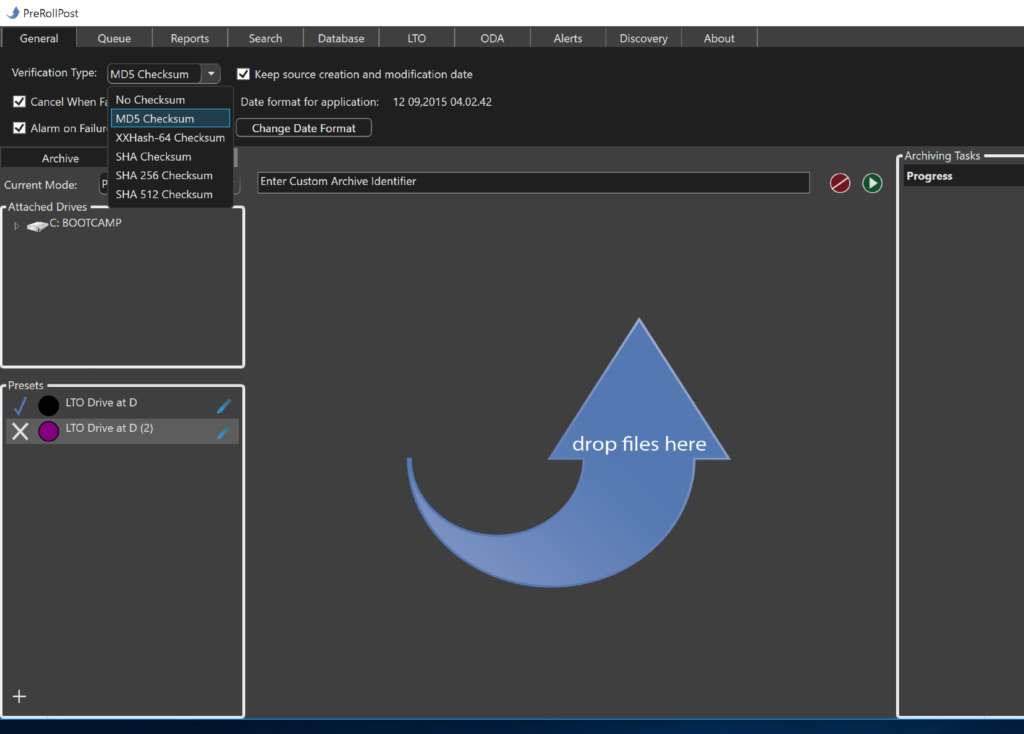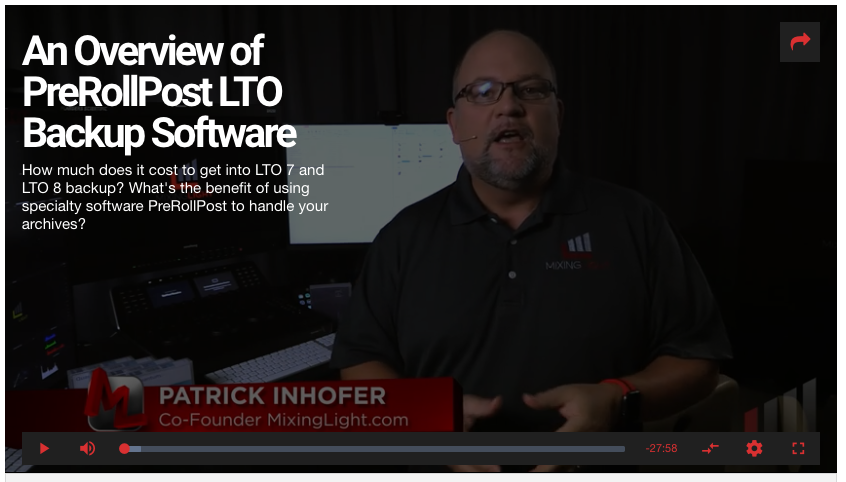
We always love it when others take an indepth look at our software. Many times we learn different ways that users are approaching the software. We always learn what features people like and what they might like us to improve.
Recently MixingLight did an overview of our LTFS software for Windows, PreRoll Post complete with a video tutorial!
We get all warm and cozy when we hear things like “fantastic piece of software” and that using PreRoll Post “renewed his enthusiasm for LTO.” Let’s face it, we make software. We know that it’s not the most interesting or creative part of the job but it is crucial. Our goal always has and always will be to create powerful software that’s easy to use and affordable. When we hear from users that we are not only hitting those goals but renewing people’s enthusiasm… well, there is no better feeling than that.
One of the key points that Patrick Inhofer made in his video was about checksums. His point was one that we make regularly. Why do an archive if you don’t run checksums? The checksums ensure that everything is being copied correctly. If you don’t use them, then try to go back years later to access it you are not guaranteed to have what you need!
If you are interested in learning more about checksums check out these blogs:
Checksums and Verification Part 1: The 5 W’s
Checksums and Verification Part 2: Define and Decide
Checksums and Verification Part 3: Speed vs Security
There are also some great blogs on LTO/LTFS archiving:
Read more below and watch the tutorial here.
How does it work compared to the free solution (and how much does it cost to get into LTO)?
In a recent Mailbag on archiving client projects, Team Mixing Light talked about using LTO for long-term storage of the assets your clients deliver to you. In this Insight, I thought we’d take a closer look at LTO – since I’m still relatively new to this hardware.
When I was having a new Resolve PC custom built, I discovered I could get into LTO for a reasonable about on money by buying a bare LTO drive. That drive got installed in the PC tower and for 18 months I’ve been using it for my long-term storage.
But it hasn’t been all roses and gum drops! I recently had a tape fail on me… and it was unrecoverable (without spending an exorbitant amount of money). And up to that point, I wasn’t happy with the performance of LTOs. When they worked, it was fine. But I’d have tapes that would get caught constantly seeking between two points on a tape, for hours. And it was not inspiring!
After that tape failure, I decided it was time to stop doing drag-and-drop archiving onto these tapes. I decided it was time to upgrade to PreRollPost by Imagine Products.
About PreRollPost
PreRollPost probably got famous for their support of Discovery Network’s stringent LTO archiving requirements – for assets delivery of final masters and camera-original material. With a click of a button, PreRollPost will generate all the metadata and reports that Discovery Network (and other networks also require) for final delivery. It became an easy way for some post-production professionals to expand their services to clients who often have never heard of LTO (and have no idea how to deliver an LTO tape).
As you’ll learn in this Insight, PreRollPost is a truly robust backup solution for the digital age. It starts with multiple choices of checksum verification, robust alerting and reporting, and rounds out with offline access to the contents of LTO library via an SQL database.
PreRollPost also has an intelligent installer that downloads all the drivers and SQL libraries you need, based on the tape drive you own.
About this video Insight
This Insight has a longer running time than I usually allow myself to deliver. But I didn’t want to break this into two parts – so here it is in its full runtime glory! 🙂
Besides talking about PreRollPost, you’ll also learn the costs involved to get started with LTO archiving.
Errata: The name of the LTO filesystem in LTFS (Linear Tape File System). I sometimes use the wrong acronym. My apologies in advance!
Enjoy!
